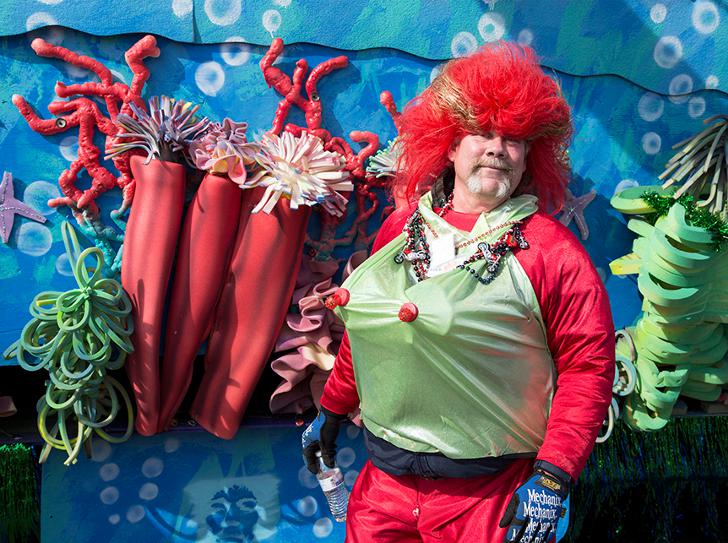St. Louis was founded by French settlers led by the fur trader Pierre Laclède in 1764. However, the city does not historically have a significant French Catholic population. The local Mardi Gras celebration started in the early 1980s in the Soulard neighborhood. A group of patrons of Hilary’s bar got drunk and decided to march to another bar because they were bored. What started as a small private party has grown to become a large-scale festival with corporate sponsorship which attracts hundreds of thousands of revelers and one of the biggest Mardi Gras celebrations in the United States.
The carnival season in St. Louis traditionally starts on January 6, the feast of Epiphany in Western Christianity. This is the day that the Three Magi visited Jesus after his birth. Festive events are held every weekend after this day, culminating on Shrove Tuesday, the day preceding Ash Wednesday (the first day of the Lenten season). Shrove Tuesday is a moveable feast, its date depends on the date of Easter Sunday and typically falls in February or March.
One of the highlights of St. Louis’s carnival season is the “Krewe of Barkus” pet parade held on the second Saturday before Mardi Gras. The parade is a family-oriented event open for everyone to participate, as long as they dress up their pet in costume and walk their pet along the parade route. Some pet owners dress up themselves and even make elaborate floats. The parade is followed by the dachshund races.
The more adult-oriented parade occurs on the Saturday before Shrove Tuesday, featuring the flashing for beads tradition which originates from the New Orleans Mardi Gras. Some women participating in the parade flash their breasts in exchange for Mardi Gras glass bead necklaces. After the parade, people with bead necklaces and beers flood the streets and keep partying.
The St. Lous Mardi Gras festival culminates with the Grand Parade held on Fat Tuesday. The parade used to take place in Soulard, but it has recently been moved to downtown St. Louis. Like any Mardi Gras parade, it features colorful floats, costumed characters, dancers, and more. Each Grand Parade has a theme which is announced beforehand so that parade krewes have enough time to prepare.

Photo by Bob Crowe




